Sourdough Questions: Everything You Wanted to Know
In this post, I am answering your most commonly asked questions about my popular sourdough starter tutorial and sourdough maintenance method.
I get so many sourdough questions!
I love that my original sourdough starter tutorial and my sourdough maintenance posts are so popular. One way I can tell is by the number of questions I receive about these two.
In this post, I will give you the answers to the most commonly asked sourdough questions!
New To Sourdough? Check out My Super Simple Sourdough Course!
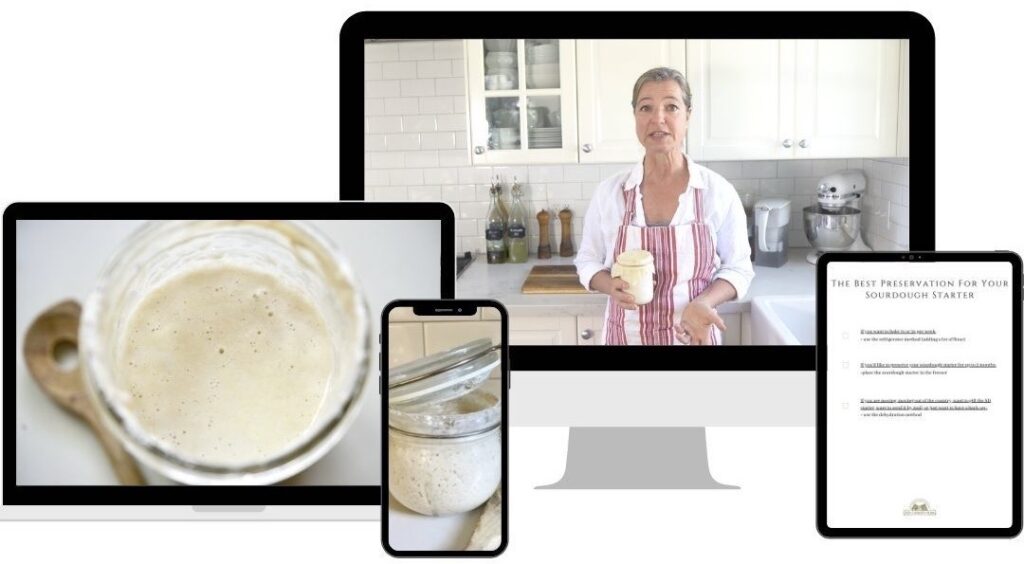
Who am I to be talking about sourdough?
I have been baking with sourdough for about 4 decades. Growing up in Germany, I would first watch and then help my mom bake her weekly sourdough breads. For example, she might ask me to transfer the dough from the bowl to the loaf pan. Or take the baked bread out of the oven and the loaf pan.
You see, I was intimately involved in all those sourdough baking steps. While I never learned sourdough from an official recipe, I got to see it. I was able to get a feel for it. Know what it’s supposed to look like.
As a result, I have been baking sourdough for a long time myself. Also, I have been developing sourdough recipes from scratch.
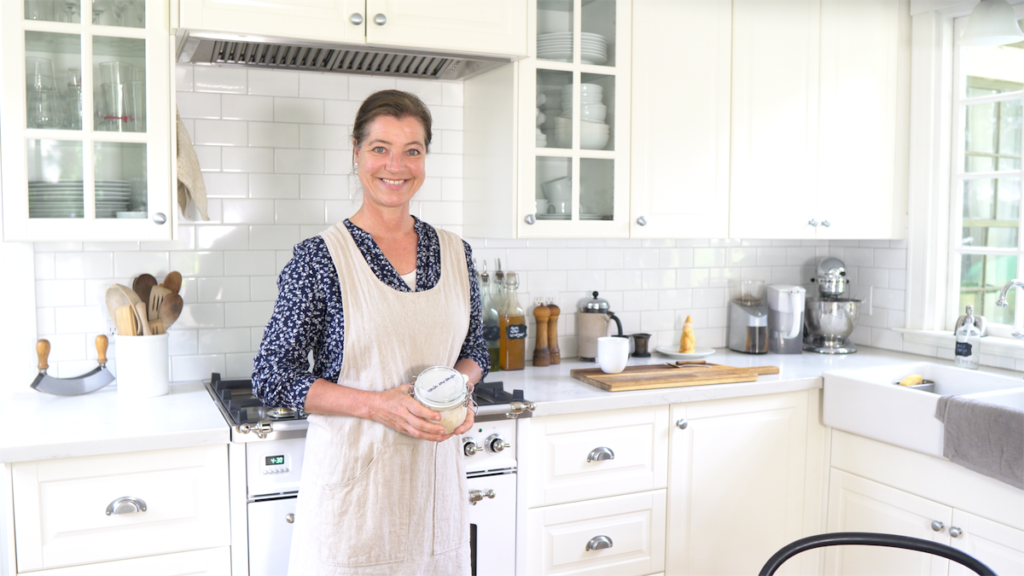
Who this is for:
If you are someone who loves a detailed recipe with exact measurements, my sourdough starter methods may not be for you. As I said, I go more by feel and consistency. That way, I have successfully baked sourdough recipes over and over again. Since sourdough is a “living” thing, it reacts to ambient temperature, moisture, yeasts, and bacteria in the air. I don’t know what those conditions are in your home when you bake but I can tell you what your sourdough should look like.
A common comment about my sourdough maintenance method is that people are relieved at how easy it can be.
Ultimately, there are so many sourdough methods out there, that I am sure that is one for everyone!
Many people told me how their grandparents or great-grandparents would keep a ball of sourdough starter in their bag of flour. I think that is such a neat fact and I love to learn these things from you!
You might get the most out of this post if you have read both my tutorial on how to make a sourdough starter and my “Easy Sourdough Starter: No feedings and no discards” method.
Question: Can you make a gluten-free sourdough starter?
Yes, you can! As far as I know, the best flours are brown rice, buckwheat, sorghum, and teff. I like using a measure for measuring flour to make a gluten-free starter. You can learn how to make one right here.
Question: Can you use Einkorn and other grains?
Yes, you can! Sourdough is perfect for grains other than wheat. I have successfully used Einkorn, spelt, kamut, and rye. I have even added amaranth, buckwheat, millet, and teff to my sourdough breads.
Question: What do I do when I get liquid on top of my sourdough starter?
That liquid that sometimes separates and sits on top of your sourdough starter is called “hooch”. It is nothing bad or serious. It only means that you need to feed your sourdough starter more flour. The first thing I like to do is mix the hooch in with a fork or whisk. You might notice that your sourdough starter is somewhat runny at that point. Simply add some flour to it to make it thicker and proceed from there.
Question: How can I make it more/less sour?
I get both questions: how to make the sourdough sourer and how to make it less sour.
The answer lies in what will affect the activity and sourness of your sourdough: temperature, humidity, ambient yeasts and bacteria, and time.
If you want a more sour sourdough, you might take a bit more starter than the recipe might say, let it sit in a warmer/more humid spot for a longer time.
Conversely, if you want your sourdough to be less sour, you let it sit in a cooler, drier spot for less time, and use a bit less starter. Also, know that adding salt will “curb” the activity of your sourdough bacteria.
In a separate post, I go into a lot more detail about how to manage the sourness of your sourdough.
Question: How do I know whether the sourdough starter is “ripe”?
That is a really good question! Here are a few indicators: your sourdough starter has a pleasantly sour smell (as opposed to a pungent smell). It will have lots of bubbles. Sometimes, I tap the bottom of my sourdough starter jar and when I get a hollow sound, that is a good sign.
Lastly, you can do the floating test: drop a bit of sourdough starter in a glass of water. If it floats, it’s ready and if it sinks, it’s not quite ripe yet.
You can also head over to my detailed blog post about how to know when your sourdough starter is mature enough for baking.
Question: Where do you keep the sourdough starter once you add the water the night before?
This question refers to my easy sourdough starter maintenance method. Usually, I keep my starter in the fridge. The evening before I want to bake, I take it out of the fridge and add water to it to activate it. Then I keep it on the counter because I also want the warmer temperature to help with activation.
Question: Does my sourdough need a tight-fitting lid?
That is another good question! I have done some research and found that you can both have a tight-fitting lid on your starter or cover it loosely.
When I keep my sourdough starter in the refrigerator, I like to have a tight-fitting lid so it doesn’t dry out more. Once I have it on the counter, I have done both. Ultimately, I just want to keep things out of it, let’s say fruit flies and that can be accomplished with a piece of cloth.
Question: When making a sourdough starter, can you use lemon/vinegar and milk?
This question refers to how I make my sourdough starter. To make things easier, I use buttermilk. There is cultured buttermilk which is what you want to use. Adding lemon or vinegar to milk makes it curdle but will not work for this recipe. However, you can use this curdled buttermilk for recipes such as pancakes.
Question: My sourdough starter is very strong, I prefer a milder one.
This is similar to the question above. You can discard half of your sourdough, add some flour (and water, depending on whether you want to bake with it right away or not), and proceed from there.
Question: I got mold on my sourdough starter, what should I do?
This is a tricky question to answer without seeing live what is going on. If in doubt, I recommend you throw it out. If you only have a bit of mold on the rim of your jar, you could carefully wipe it off and transfer the sourdough to a clean jar. If on the other hand, you have a lot of mold sitting right on top of the starter, it’s best to discard it entirely. I will mention that some people have generously taken off the top layer but I would be careful.
I actually have an entire blog post dedicated to how to prevent mold on your sourdough starter that you might like to read.
Question: Should I use AP flour or bread flour?
I don’t think it matters! As far as I know, bread flour contains more gluten. So ultimately, the type of flour you use will affect the bread but it doesn’t matter for your starter. I typically use regular all-purpose organic white flour for my white sourdough starter. For my whole wheat starter, I grind my own grains.
Question: When rehydrating my sourdough starter, I have a lot of lumps, what do I do with them?
I know exactly what you’re talking about! In my easy sourdough maintenance method, I add water to a very dry starter the evening before I want to bake. With a fork, I mix it all up. Sometimes, there are some lumps in the starter. If they still are there the next morning, you could take that fork and try to break them up a bit more. But if these lumps end up in the bread, they won’t hurt it. You might see them (I certainly have) but they are mostly an aesthetic issue.
Question: Can I freeze my sourdough starter?
This is something else that I have not personally tried myself. I do know of people who have frozen their sourdough starter and used it when thawed. What I hear, though, is that your starter may be a bit sluggish in the first few bakings. Therefore, I recommend adding a bit of yeast to make sure your bread rises.
Question: Can I use distilled water for the sourdough starter?
Yes! Actually, I use filtered water or distilled water. Most tap water contains chlorine which will inhibit your sourdough starter. So both for making and maintaining a sourdough starter I recommend distilled or filtered water.
Question: What do you mean when you say you add A LOT of flour?
Again, this refers to my easy sourdough starter method. In between bakings, I add flour to it to de-activate it. Since I take a bit of starter from the bread dough but I am not telling you in grams how much that is, that amount might vary. Simply add flour by spoonfuls until your sourdough starter is very dry. Then add some more. I often have a ½-inch layer of flour on top of my starter.
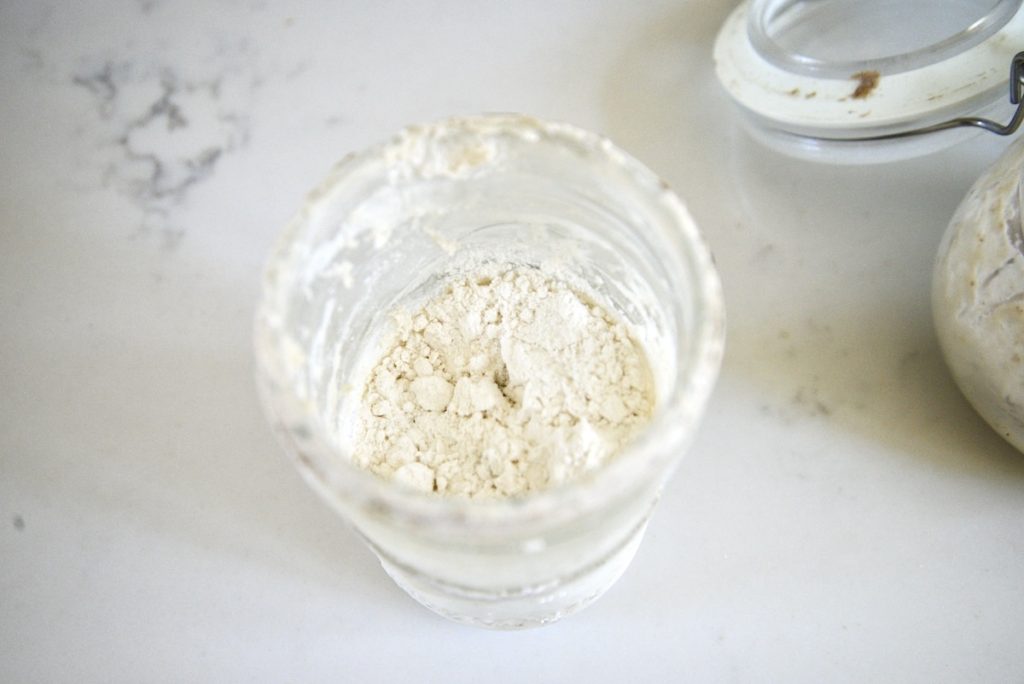
Question: How long does it take to make a sourdough starter from scratch?
The short answer is, that it depends. As I said above, temperature, humidity, and ambient yeasts/bacteria all have an effect on your sourdough starter. Having said that, you might have a starter in 6 days or only after 10 days. In any event, do not give up too soon!
Question: How much sourdough starter do I need to make bread?
If you have a specific recipe you’re following, I would say do what the recipe says. Of course, it depends on if you’re baking one small bread, one larger bread, or two loaves. You can always let your bread rise a bit longer if you make it with a smaller amount of sourdough starter.
Question: Why do you add yeast to your sourdough bread recipe?
I am adding yeast and malted barley to my artisan no-knead bread. You do not need those ingredients if you don’t have them or don’t want to add them. I like to include them because I wanted a very uncomplicated bread recipe that gives me a reliably light and airy bread. The yeast will help with that and the malted barley flour acts as an activator for the yeast. If you don’t have the latter, you can add a bit of sugar instead.
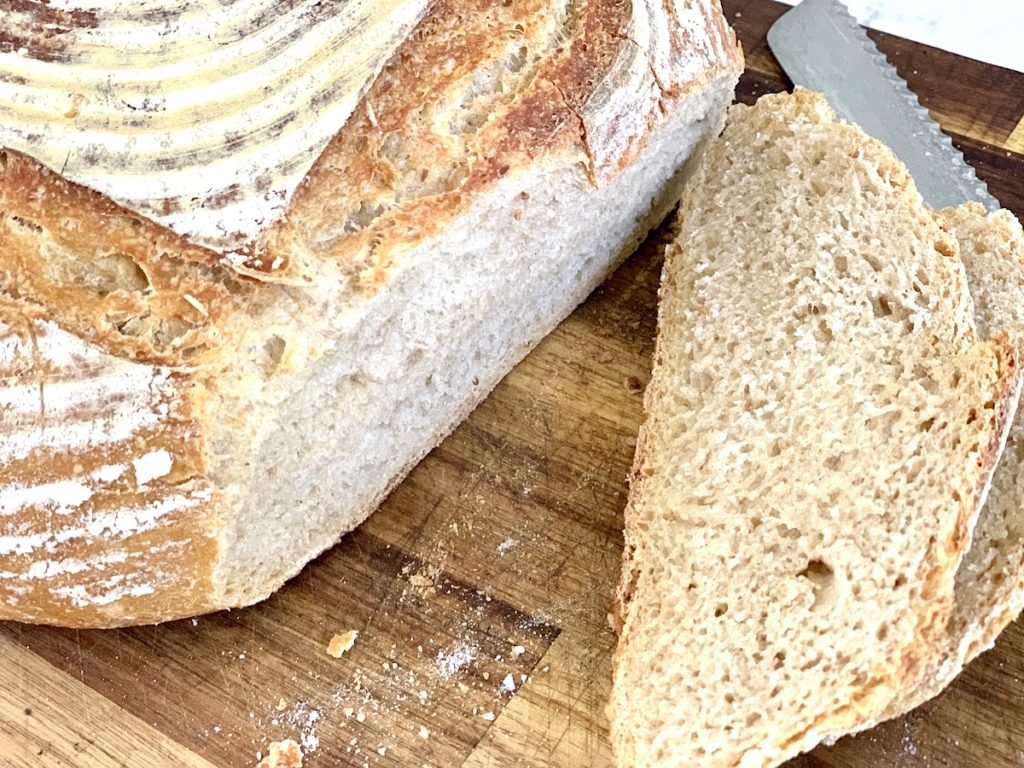
Question: Is it okay to use a metal fork with the sourdough starter?
It is generally recommended to use only non-reactive bowls and vessels for your sourdough. I would say this is true for letting your sourdough rise. But when I mix up my sourdough starter, the contact time with a metal fork is so short that it doesn’t hurt it. I have done so for years and have not noticed any problems.
Do you have any other questions or comments?
I love that people are so enthusiastic about sourdough and sourdough baking. If you have any other comments or questions, I will always do my best to answer them. So please ask away!!
Pin For Later:
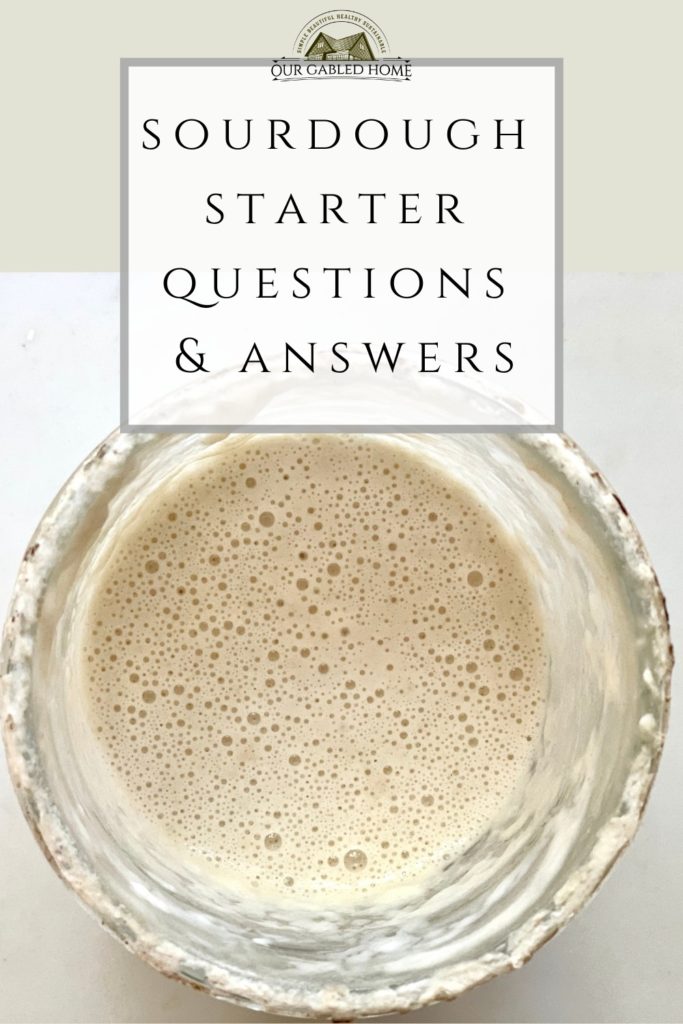
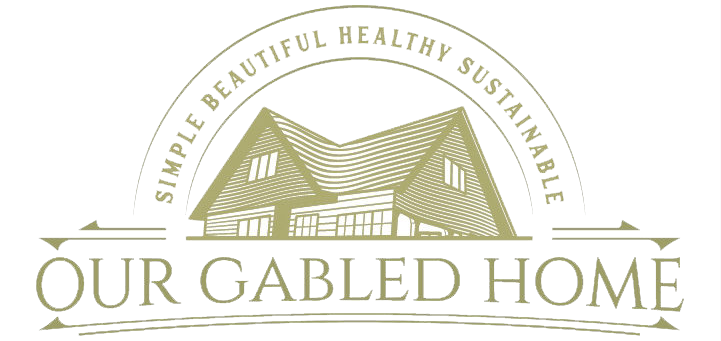
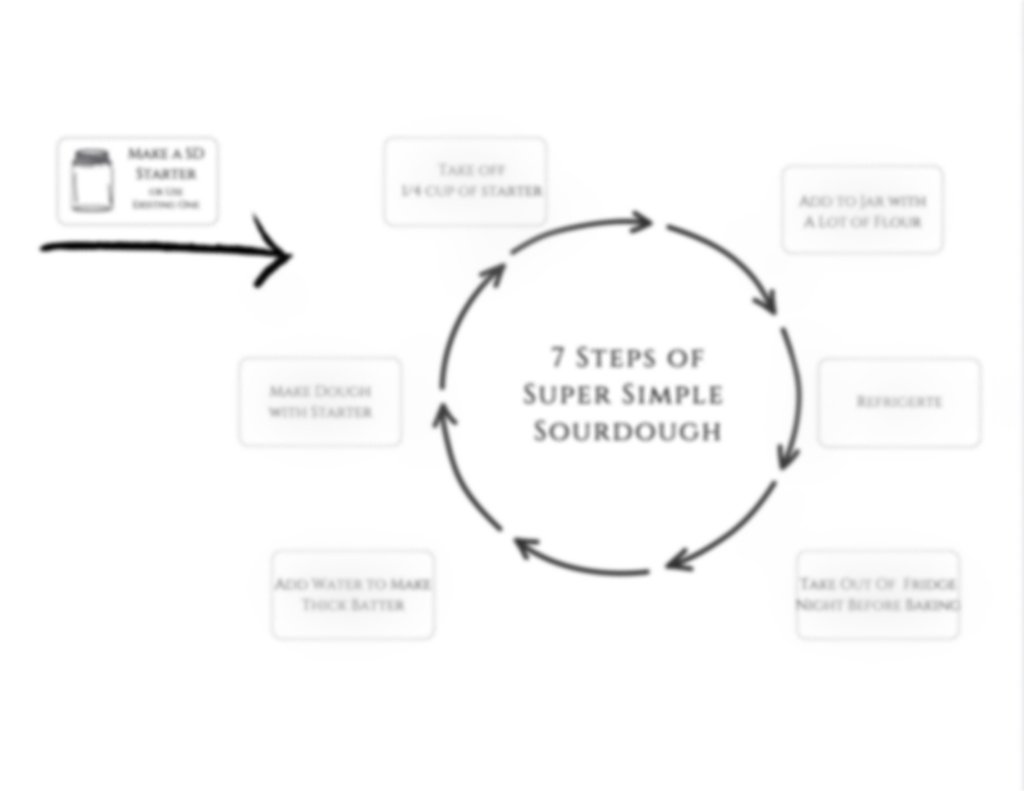
Hi Anja, thank you for sharing this ancestral knowledge
I am wondering, as I started my starter with rye flour and vegan cultured yoghurt… After 3 days it had many bubbles on top, but i couldn’t t see any on the sides. And now, after 5 days, there are no more bubbles at all…
Will they return?
I used half of it with some commercial yeast to bake the olive oil sourdough bread, yummy!
This time I replace the olive oil with colza oil, just to see how it tastes.
The other half of my starter, i left untouched, except for the daily stirring.
Hoping the bubbles will come back? What do you think?
Should I have started baking on the third day?
Love from Belgium many thanks and warmest regards
Murielle
I am so glad you liked the olive oil sourdough bread! I am not sure why the bubbles would disappear but I am inclined to recommend a feeding with flour and water at the same weight, stirring vigorously, and seeing if that helps ~ Anja
Hi Anja,
I love your method creating a sourdough starter. I’m just not sure about buttermilk temperature.
We have to keep the buttermilk in the fridge. So, when you mix with the flour what’s the temperature for the buttermilk?
Thank you,
Patricia
You can use buttermilk straight from the refrigerator ~ Anja
If I start it today Friday Jan 26/24 with homemade yogurt and organic flour and dash of water and smells like it fermented and takes 6-8 days well how long do I wait to make sour dough bread ?
Some people will tell you to not bake with a young starter (also having something to do with there not being enough beneficial bacteria to outnumber the potential unwanted bacteria) but I have successfully baked with a young starter. Ultimately, it is up to what you are comfortable with ~ Anja
Thank you for all your articles about SD starter, they helped me a lot to make mine, my question is how to get the starter more active and stronger? Because the bread’s rising is so slow it almost doesn’t rise at all. Or maybe should I make the starter from scratch ?
Thanks in advance
I like to add rye flour to make a sluggish starter super active.
I’m following your buttermilk-rye sourdough starter method from your video. I misunderstood you about the flour amount so about 4 days in, added 1 tablespoon of flour. It now has bubbles. I started it at night. So tonight day 6 I opened it and found a skin on it, which I removed (and then googled and an answer said it was fine, just got dry on top. We live in S California, a dry climate. So would it hurt to add a bit of water and put a lid on instead of using the coffee filter? And in future maintenance, maybe make it slightly more hydrated a mix under the layer of flour? It does have bubbles, and it tastes like it’s fermented (tasted fork after stirring) . Does your method make the starter rise/grow? Thank you. My first time at age 72:)
If you see skin but no discoloration, you can just stir it in or add a tad more water. If you make a starter with my method it may not rise much when it’s young but will as it gets more mature ~ Anja
When they say sometimes you need to feed your starter twice a day for 2-3 days in a row do I still need to discard each time I feed it or do I just keep feeding it for several days and then discard after I ise what the recipe calls for?
I have never fed my sourdough starter more than once a day, if even. My method is very different. However, if you feed it and not discard any, you will end up with a lot of starter. Hope this helps ~ Anja
Good Morning Anja, I have watched your tutorials and just made my first German whole grain loaf. The starter with Rye flour, buttermilk and caraway seeds was fantastic! The bread, however is VERY heavy and a bit gummy. I know I over worked the dough, adding too much water, then extra flour, transferring to different bowl etc. It did rise but I want a sandwich loaf that is still dense and chewy, with better texture. Can I add DIASTATIC Barley Malt to this recipe as well as 1 tsp yeast? Also thinking of substituting a lighter flour for some of the rye. Thank you! I baked yeast breads for years when younger, now in the depths of February excited to explore sourdough.
It is very possible to overwork the dough. I often add diastatic malt and yeast. Feel free to experiment with different flours until you get the bread you prefer ~ Anja
I just received some starter from a neighbor. I will try your method since it sounds simple and I am a very busy person.
Discarding and feeding scared me.
Thank you and I hope i have success my first time in making sour dough bread.
Nice, Lisa! Be sure to check out my other posts on sourdough as well, especially this one: https://ourgabledhome.com/how-to-make-your-own-sourdough-starter-from-scratch/ and this one: https://ourgabledhome.com/easy-sourdough-starter-no-feedings-no-discards/ Happy sourdoughing ~ Anja
Lately i’ve been culturing butter, making my own mascarpone an clotted cream etc. Having a grand ol time. I love sour dough bread but never make it because of the process of making the starter. when i came across your post i was super excited. I’m on day 3 of my buttermilk starter ( this is cultured buttermilk that I culture and re culture at home). Here’s my question; after I add flour to the leftover starter and place in the fridge- how long do I need to wait before I can use it? do I have to wait a specific number of days? or are we looking for a certain consistency? Please let me know. I’m so excited to be on this journey!
That sounds great!! I love that you’re happily fermenting and now getting into sourdough baking. You don’t have to wait any specific amount of time. If you wanted to bake on 2 consecutive days, you might not even have to put it in the fridge. Hope this helps ~ Anja
I love all of the information you share. I am very excited to try sourdough. I bake a Japanese milk bread (Tangzhong method) every 5 days. My husband is not allowed salt for medical reasons so I omit the salt and use 1 Tablespoon of a natural apple cider vinegar to help control the yeast and rise in the recipe. My question is…will this also work with a sourdough recipe?
That sounds great, Marsha. As for adding ACV to sourdough, I have no experience with that and am not sure it would work. However, you can always experiment. The worst that can happen is that you won’t like your bread. If you do bake a SD bread with ACV, let me know what you learned ~ Anja
I have been successfully making sourdough bread in Houston Texas. I transported my starter to Ohio and the starter has lost it’s sour smell. It does grow and bubble when feed. Other than location, I have been feeding with 100% all purpose and I was using 50/50 with whole wheat. I just read using bottled water, so I will try that with the next feeding and forward. Any other ideas?
That is very interesting. How long ago did you move your starter to Ohio? Is the tap water there chlorinated? You might want to go back to 50/50 whole wheat flour, at least until your SD starter is fully active again. Hope this helps ~ Anja
Hi Anja,
I have gone to a stiff dry starter exclusively, but here’s my problem. Many recipes call for 100 or 150g of sourdough starter and I know they are referring to the 50/50 mix of flour and water. I have to rehydrate my stiff dry starter. OR if I create a levain to bring the dry starter to the 50/50 ratio, the levain ends up weighing 270g. (about 1 cup). Does it matter if I use all of this levain, and just stubtract the levain’s flour and water amounts from the recipe? I know this sounds complicated. Sorry.
Hi Marianne, honestly I have always used my sourdough by feel and never measured anything. However, for using the levain, you can absolutely subtract the water and flour from the recipe. Hope this helps ~ Anja
Hi, I’m very new to this and I’m used to measuring everything. When you add the flour to the starter to make it thick before you put it in the fridge, I see you add flour to get it that way but not how much. But when you take it out of the fridge and add the water, how much water do you add, to what consistency? I don’t want to ruin my starter😰 Thank you! Anne
Hi Anne, how much flour you add depends on the amount of starter you have. Just add some flour and stir it up. It needs to be so thick that you can’t stir it anymore. You almost can’t add too much flour. I often even put a layer on top. The same goes for adding water once you’re activating it again. Just eyeball the amount to create a thick pancake batter-like consistency. I hope this helps ~ Anja
Can you rehydrate and use just a portion Of the sourdough starter?
Yes, you can! Happy sourdoughing ~ Anja
Regarding your coffee set that you need to replenish some pieces, you can do so through a company called Restorations in Greensboro, NC. They handle these transactions all over the world.
Your utube channel is great!
Yes, I do have a search on replacements.com but so far no luck. Thank you so much for sharing and for your nice comment ~ Anja
Hi, I love your method for sour dough! I made my starter using my home made plain yogurt instead of buttermilk, and it worked great. I was able to make a no knead loaf using my simple recipe and adding 3/4 cup starter, I didn’t add any yeast . The loaf had a good rise, wonderful taste and texture.
That is so great!!! I always love hearing people’s success stories! Thank you so much for sharing ~ Anja
I used whole wheat flour, caraway seeds & Greek plain yogurt for the starter. How long did yours take? I’m on day 8 & no bubbles. I’ve added more whole wheat flour when it seemed runny when stirring every day.
Depending on a lot of variables, it can easily take 10 days, especially if this is your first starter. Don’t give up ~ Anja
I made a fresh starter from wheat flour and water. Within 24 hours it had doubled and had lots of air. It smelled like rotting fruit and not at all pleasant. It also had some areas of darker colour than rest of the mixture. I let it rest and on day 3 it has stopped smelling that bad but there are no bubbles as well. So I stirred the mixture and that’s when I saw that the mixture underneath was of lighter colour than the upper part. I’m not sure what to do. Also, It’s humid and warm here
Hey there, it’s always challenging to give a remote diagnosis but here are my thoughts: you might have “hooch” on the bottom which I would stir up and add some extra flour or your starter could be going bad. There are a ton of different reasons why a SD starter might go bad. I’d also like to steer you towards my SD starter post: https://www.ourgabledhome.com/how-to-make-your-own-sourdough-starter/ Hope this helps ~ Anja
Hi, i woukd like to know whether u can substitue for cultured buttermilk to us soya bean milk, coconut mill, tiggernut milk etc. What i meant is vegan sourdough as i can’t take dairy product at the moment as i have psoriasis. Thank u
Hi Cecilia, you can just leave out the buttermilk entirely and make your SD starter with flour and water. Happy sourdoughing ~ Anja
Hi. I have a new sourdough starter. Just a month old. When I first made it, it had many bubbles. After a few uses and feedings, it’s not bubbling or rising like it used to. I’m not sure what I’m doing wrong.
Hey there, it’s a bit hard to do a remote diagnosis. However, sourdough likes warmth and humidity so when those drop, it might affect it. I would say stay with it and hopefully your starter will become active. It can take about 10 days to get it there. Hope this helps ~ Anja
I have tried your starter and absolutely love it. My question is: how do I increase the amount of starter? The base starter only makes a little less than one cop and I have a few receipts that call for two cups. Thank you so much for sharing your wonderful starter with everyone.
Thank you
It’s very simple to increase the amount of starter: simply add more flour and water. You still want the consistency of a thick pancake batter. If you’d like to bake Wednesday morning, I would take the starter out of the fridge Monday evening, add flour and water and let it sit out on the counter until Wednesday morning. Hope this helps 💛 ~ Anja
Would I feed it Monday and Tues??
Yes, that would be perfect!
Definitely saving this post for if/when my sourdough has problems! I just tried a no-knead sourdough bread for the first time the other day, and despite over-baking it a bit, it turned out pretty well!
Nice! I find sourdough very forgiving 😊